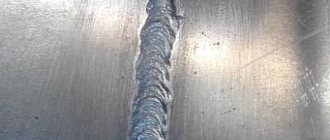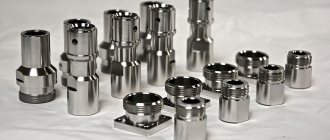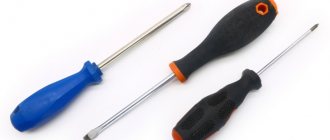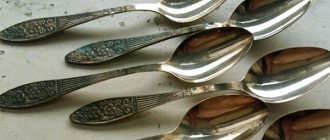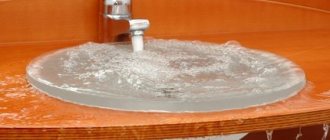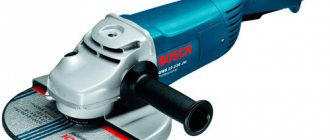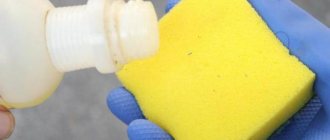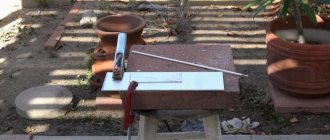Process description
Electroplating is an electrochemical process that allows you to make copies of products of different shapes and sizes. The advantage of the technology is high processing accuracy.
Electroplating is an electrochemical technology that involves coating metal workpieces with a layer of metal. The coating is selected depending on the required technical characteristics, which should be higher than those of the base. Most often, chromium, silver, and nickel are used to coat metal products.
The technologies can be called the same, but they differ in the way they prepare work surfaces. Before electroplating, processing is carried out aimed at creating a strong connection. The coating after galvanoplasty should be easily separated from the base.
General information about galvanoplasty.
Electroplating is a technique for producing exact metal copies from molds by electrodeposition. More precisely, this is a galvanic method of molding products, during which the metal released during electrolysis reaches a thickness of 0.25-2 mm and reproduces the shape of the surface on which it is deposited. As a result, the coating becomes the product itself.
Currently used in electroplating: Cu, Ni, Ni-Co, Ni-Fe, Ni-Si, Ni-W, Fe, Pb, Cr, Au, Ag. Galvanoplastic copies are created from molten salts using refractory metals: Re, W, Mo.
A special case of electroforming is electrolytic molding. The difference between these processes is that in electroforming the mold is separated from the copy or destroyed, while in electroforming it remains inside.
Important aspects in the process of galvanoplastic formation of products are the preparation of the surface of the mold used, the creation of a conductive and/or separating layer on it.
Galvanoplasty was created by the Russian scientist Boris Semenovich Jacobi in 1836. During experiments with Daniel elements, Jacobi “...saw several almost microscopic scratches of a file that exactly corresponded to each other: concave on the surface of the cylinder and raised on the surface of a separate leaf. Galvanoplasty was the result of this careful research."
Seeing such an interesting phenomenon, Jacobi immediately began searching for its technical application. December 5, 1838 At a meeting of the Academy of Sciences, Jacobi's report on the invention of the electroplating technique was read and samples of galvanoplastic copies of engraved printing plates were demonstrated.
Advantages of galvanoplasty as a molding method: • high accuracy of reproduction of the micro- and macrogeometric complex relief of the surface on which metal is electrodeposited; • low cost of tooling and equipment, which allows you to frequently change the design of parts; • reuse of models for extension; • identity of parts removed from one model; • in conditions of multi-batch production, the ability to simultaneously produce a large number of parts, which is determined by the size of the baths and the power of the current sources; • production of combined parts, both from various metals and non-metals; • low labor costs compared to such shaping methods as casting, stamping, and machining.
Disadvantages of galvanoplasty: • Limitations in the list of metals and alloys used; • Relatively low deposition rate; • Uneven distribution of electrolytic deposits over the relief surface, which entails an increase in the stages of mechanical processing.
The scope of electroforming is very wide: seamless pipes, waveguides, bellows, shaped charge sleeves, art products, components for fusion and nuclear energy research, surface roughness sensors, gold crowns and bridges for dentistry, calibration scales for electron microscopy, housings for hearing aids, microdevices for electronic, micromechanical applications and much more.
Areas of application
More often, electroplating is used in the manufacture of jewelry: copies of coins, orders, jewelry, figurines. The most popular material used for the work process is copper.
If the work was carried out in compliance with the technological stages, using good equipment, the finished copy will be difficult to distinguish from the original. The differences are visible only in the barrier layer.
You can do the work at home. Before carrying out the technological process, it is necessary to make sure that the surface of the workpiece from which the copy will be made conducts electricity. If this is not the case, it needs to be coated with a layer of bronze or graphite. To achieve the desired result, a person needs to understand electroplating technology.
Figured bracelet (Photo: Instagram / moreleslaboratorium)
Application of galvanoplastics in industry.
The classification of the use of galvanoplastics in industry mainly comes down to a consideration of galvanoplastics by industry or manufacturing technology; tools and equipment are also distinguished separately. Next, I will present examples of the application of the electroforming process in the production of specific parts and products that are most interesting in my opinion.
3.1 Production of seamless pipes of various profiles and complexity.
The process of manufacturing thin-walled pipes without a seam using the electroplating method was first implemented in Russia. THEM. Fedorovsky produced straight, complex bent pipes with branches of different diameters and different wall thicknesses using the galvanoplastic method. His method was as follows: pipes were made by depositing copper on a cathode, which was a rotating copper or iron rod; the current density in the process ranged from 2 to 6 A/dm2; An agate stone moved along the rod, smoothing and compacting the sediment (the process of removing the pipe from the mold was not described).
Figure 1 – An example of a complex profile pipe made by electroplating.
In practice, pipe production is carried out in many different ways. One of these methods is metal deposition on a cylindrical form horizontally located in the bath. The bases of the cylinder are covered with an insulating mass to prevent copper from depositing on them. The wooden axes of the mold are placed in glass bearings, and a rotational movement is imparted to the cylinder. Rotation speed - 40 rpm, current density 1.2 - 1.5 A/dm2. Copper anodes are located at the bottom of the bath. A pipe with a wall thickness of 3.2 mm takes 144 hours to grow. Upon completion of the process, the pipe, along with the mold, enters the flaring machine and is then removed. Venturi tubes for measuring fluid flow are prepared as follows.
Figure 2 - Venturi pipes. At the top are the forms, at the bottom is an extended pipe with soldered flanges and bends
The first step is to make an aluminum alloy mold. They are prepared mechanically or by injection molding. The molds are carefully ground, polished, glossed, after which they are degreased in an organic solvent, then in an alkaline solution, and then washed. Before hanging the forms in the bath, they must be decapitated in a mixture of nitric and hydrofluoric acids. This step is necessary to remove the oxide layer from the surface of the aluminum, and this in turn improves adhesion and increases the tightening speed.
Tightening of the aluminum mold must be done in a bath of low acid concentration and high current density. When the form is completely tightened, it is transferred to the extension bath. At the end of the extension, the form is dissolved in concentrated caustic soda or hydrochloric acid. The inner surface of the tube is coated with a thin layer of silver.
3.2 Production of waveguides.
The technological process for manufacturing waveguide elements consists of the following main operations: preparing the surface of the mold (degreasing, applying a separating or “protective” layer), electrodeposition of a thin layer of gold or silver, deposition of a base layer of copper (or nickel) 1.5-2.0 mm thick , extracting the form from the resulting copy.
Figure 3 – Fragment of a waveguide: 1 – electrodeposited metal layer, 2 – molds
If it is necessary to obtain a strong but lightweight structure, then the process of enveloping electrodeposited metal layers with plastic is used. In the production of waveguides, both permanent and composite forms are used. Form materials are selected depending on the situation. So, if the configuration of the waveguide assembly does not allow the mold to be removed without destroying it, then the mold is made from aluminum and its alloys, and sometimes from zinc alloys. Molds from these materials are removed by dissolution. For the manufacture of permanent forms, corrosion-resistant steel is widely used, which makes it possible to easily separate the metal layer without special preparation. But it is not always suitable for making molds, especially small cross-sections, due to its relative softness, and this steel is also inferior in mechanical strength to chromium and tool steels. In the production of waveguide units, steel grades 40Х13, 30Х13, 20Х13 are most often used. To build up basic metal layers in waveguide technology, pyrophosphate and sulfamate copper plating electrolytes, as well as sulfate and sulfamate nickel plating electrolytes, are most often used. In the case of manufacturing channels of complex design, it is recommended to deposit nickel from a citrate electrolyte. This electrolyte has better dissipative ability, but it is less stable in operation compared to sulfate and sulfamate electrolytes; nickel deposition in it occurs at a low rate. When using molds made of structural steel, citrate electrolyte does not cause corrosion (pH= 7-8).
3.3 Obtaining bellows.
Bellows are thin-walled corrugated tubes of various diameters.
Aluminum alloys are used to make molds, since the bellows design does not allow the use of permanent molds. The finished aluminum tube mold is shown in Figure 4.
Figure 4 – Aluminum pipe mold for electrolytic forming of bellows
The mold is cleaned of contaminants and, using a special contact device, after zincate treatment and washing, it is suspended in a galvanic bath. After metal deposition, the mold is etched in a solution of hydrochloric acid and the part is obtained. Most often, deposition is carried out from a nickel sulfamate electrolyte. When deposited onto the mold shown in Figure 5, there is a significant difference in the thickness of the deposit on the depressions and on the protrusions. For this reason, the process is best carried out at low current densities (ik=1.0-1.5 A/dm2). Due to this, a more uniform distribution of nickel deposits across the form is achieved.
Figure 5 – Contact device for electrolytic forming of bellows.
3.4 Cases with a shaped charge.
Shaped charge casings are devices that focus the chemical energy of an explosion to achieve predetermined effects. The main uses are in armor-piercing projectiles and as penetrators in oil drilling.
Figure 6 – Shape and finished sleeves. They are usually made in several ways. For example, metal pressing is the most cost-effective. However, certain special applications require not only a very high degree of precision (especially concentricity), but also chemical properties. The quality of the surface, both inside and outside, is also important. All these parameters can be achieved in the electroforming process. So the molds are made of aluminum. They go through the standard stages of preparation. The most commonly used are acidic copper electrolytes. Removal of the mold is possible mechanically and by treatment in hydrochloric acid.
3.5 Molds and dies.
Galvanoplasty is used as a method for manufacturing form-building parts (inserts) of molds and dies. The manufacturing process of inserts is largely determined by the material of the mold. When using a metal mold, the technological scheme is simpler, but due to the large amount of mechanical processing and fine-tuning of the mold, the cost of the resulting products increases significantly. The process of manufacturing inserts for this case includes the following main stages: preparing the surface of the mold, obtaining a working layer (deposition of nickel and nickel-cobalt alloy), creating a structural layer and fastening the inserts in the matrix. When using non-metallic materials, metallization of the mold surface is necessary. In this case, during mass production, it is advisable to initially produce an intermediate master mold in which the required number of molds necessary for subsequent use in the manufacture of molds can be cast. The master mold is produced using electroforming. Below are all kinds of applications and examples of the use of electroforming.
3.6 Artistic electroforming.
In this case, we consider the technology of making sculptures from composite copies, i.e. replica parts for sculptures are obtained on separate forms - fragments of sculptures. The technology using gypsum molds can be briefly described as follows. Initially, sculptures are made (primary form) from some material (usually clay). After which the sculpture is divided into individual elements, and the boundaries between them are drawn, which determines the quality of the sculpture. Plaster copies (secondary form) of individual elements are removed from the primary form, from which metal copies are made using an electrochemical method. The prepared plaster molds are thoroughly dried and impregnated. The impregnation can be a wax composition. After impregnation, the mold is dried and an electrically conductive graphite layer is applied to it. When electrochemically growing a copy from a mold in a galvanic copper plating bath, acidic sulfuric acid electrolytes are used; sometimes stirring of the electrolyte is required (for example, purified air). The copies obtained separately are mounted one next to the other, thus completing the process of creating a galvanoplastic sculpture. Installation work includes: making frames for three-dimensional sculptures, soldering individual copies together, cleaning seams after joining parts, etc.
Examples of statues created by electroplating are shown in Figure 7.
Figure 7 - Examples of statues created by artistic electroplating.
3.7 Other applications of electroforming.
3.7.1 Thin-layer products.
Nickel Foil: Fire Retardant Blankets, Seamless Tapes, High Temperature Gaskets (with Graphite), Photovoltaic Cell Substrate, Solar Absorbers. Nickel mesh: electron microscope gratings, sugar centrifuge sieves, electric razor, battery screens, screen printing, platinum sieves for fuel cells, spray paint masks.
Copper foil: printed circuit boards.
Iron foil: packaging.
3.7.2 Tubular products.
Nickel: patterned textile printing cylinders, capillary columns for gas/liquid chromatography, nickel-plated diamond-coated drills, ultra-precision components for X-ray telescopes, nozzles for inkjet printers and uranium enrichment, bellows, waveguides, Venturi tubes. Gold: tubes for jewelry.
3.7.3 Duplicate plates.
Analogue and digital audiovisual recordings, Fresnel lenses, holograms, printing and embossing plates.
3.7.4 Forms and equipment.
Nickel: low pressure/low temperature molds for pressing, injection molding of plastic, rubber, glass, zinc. Electroformed tools, including press tools, casting molds, diamond cutting belts, abrasive sheets and copper spark erosion tools. Nickel/cobalt, nickel/manganese or nickel-phosphorus/silicon carbide: Harder forms with higher temperature resistance.
Copper: forms that require good thermal conductivity.
3.7.5 Optics.
Videodiscs and holographic stamps; X-ray telescopes; range of metal optics, including complex aspherical reflectors.
Materials and equipment
To carry out the work you need to prepare certain equipment and materials:
- Galvanic bath. The permissible dimensions of the processed parts depend on its dimensions.
- Nichrome wire.
- A copper plate that will act as an anode.
- Working staff. It is made from 50 ml of ethyl alcohol, 1 liter of water, 200 g of copper sulfate, 15 g of sulfuric acid.
- DC source.
Additionally, you will need a thermometer. It is important to maintain the operating temperature within 18°–25°C.
Preparation of material
Before carrying out work, it is necessary to prepare the products. For workpieces that conduct current, the process consists of several stages:
- cleaning from rust, plaque, dirt;
- degreasing the part in a pre-prepared composition;
- drying surfaces.
If we talk about dielectric workpieces, the preparation looks different. Step-by-step instruction:
- Surfaces are cleaned of dirt, dust, degreased, and dried.
- If the product contains rubber, the surface must be wiped with alcohol and dried. After drying, apply a layer of colloidal graphite with a brush. Rub the mixture in for 10 minutes. Remove remaining graphite with compressed air.
- To start working with parts with complex relief, you need to apply a metal film. Initially, the product is degreased with Vienna lime mixed with a synthetic detergent. The proportions are 1 to 1. After degreasing, it is necessary to immerse the part in a sensitization solution (exposure time - 10 minutes).
After treatment with chemicals, the product is washed under running cold water.
Metal figurine (Photo: Instagram / _galvanoplastika_)
Treatment
You can perform galvanoplasty at home. To do this, you need to take into account a number of features and perform actions step by step. Step-by-step instructions for processing parts:
- Pull out 20 cm of wire from the multi-core cable.
- Clean the insulation from both sides of the wire. Bend one of the ends at an angle of 90°.
- Glue the corner to the plastic part.
- Degrease items after the adhesive has dried. It is better to use household chemicals for this. Solvent will not work.
- Rinse the product under running water.
- Prepare bronze paint in advance. Holding the part by the wire, slowly lower it into the container with the working fluid. It is important that the surface is painted evenly.
- Dry the product for an hour.
- Attach the positive contact to the part. Immerse her in the bath.
- Leave the workpieces in the container under voltage for 15 hours.
- Rinse parts under running water.
After metallization is completed, processing must be completed. To do this, apply sulfur ointment to the work surfaces and hold it over the gas stove. The copper should darken.
There is another option for performing the work. Step-by-step instruction:
- Make a tassel from stranded wire. Secure one end to a wooden handle and expose the other.
- Connect the positive contact from the common electrical circuit to the second end.
- Pour the electrolyte solution into a wide container.
- Connect the part to the negative contact.
- Dip the brush into electrolyte.
Wait for the desired visual effect to appear.
The last stage of the work is polishing. You will need a large grinder with a special brush. The treatment must be carried out with careful movements so as not to erase the applied layer. The visual effect that should be achieved after the work is blackened bronze with individual shiny areas.
Copper leaf (Photo: Instagram / incredible_craft)
Safety precautions
To protect your body, you need to follow a number of rules:
- Work using a respirator, safety glasses, gloves, and special clothing.
- The room must have good ventilation so that harmful fumes escape outside.
- Explosive substances and various types of fuel should be removed from the work area.
- Do not consume food or water while working. This can only be done in a separate room.
By following the rules, you can reduce the risk of poisoning and injury.
Electroplating is used to create exact copies of various products. The technology involves the restoration of a workpiece by settling metal particles on its surface. Since the work involves the use of caustic chemicals, safety precautions must be observed.
Theory[ | ]
The theory of electroplating is based on existing ideas about the composition and properties of electrolytes, in particular, we are talking about the dissociation of compounds into charged cations and anions, the ability of cations to move under the influence of an external electric field and be reduced to metal, accepting electrons. At the same time, the practice of electroplating requires the formation, as a result of ongoing physical and chemical processes, of a continuous uniform metal layer on the surface of the substrate, and this result is determined primarily by the accumulated experience in the use of various electrolytes, conductive soils, pre- and post-processing of products and electrolytes, selection of optimal compositions and concentrations, current density values and leveling of these densities over the entire surface of the product.
The theoretical material balance of the galvanic process can be determined by Faraday's law. However, the actual current efficiency of the deposited metal always turns out to be less than the theoretically predicted one. This is partly due to the fact that the electrolyte always contains foreign cations, which either have different charge-to-mass ratios (for example, an admixture of silver ions in a solution of copper sulfate), or do not settle on the cathode, but are removed from the electrolyte during reduction (for example, H+ ). The finite speed of movement of ions in the electrolyte (losses due to heating of the electrolyte), diffusion phenomena, and mixing of the electrolyte due to vibration, convective and other mechanical influences have their influence.
| This section is not completed. You will help the project by correcting and expanding it. |
